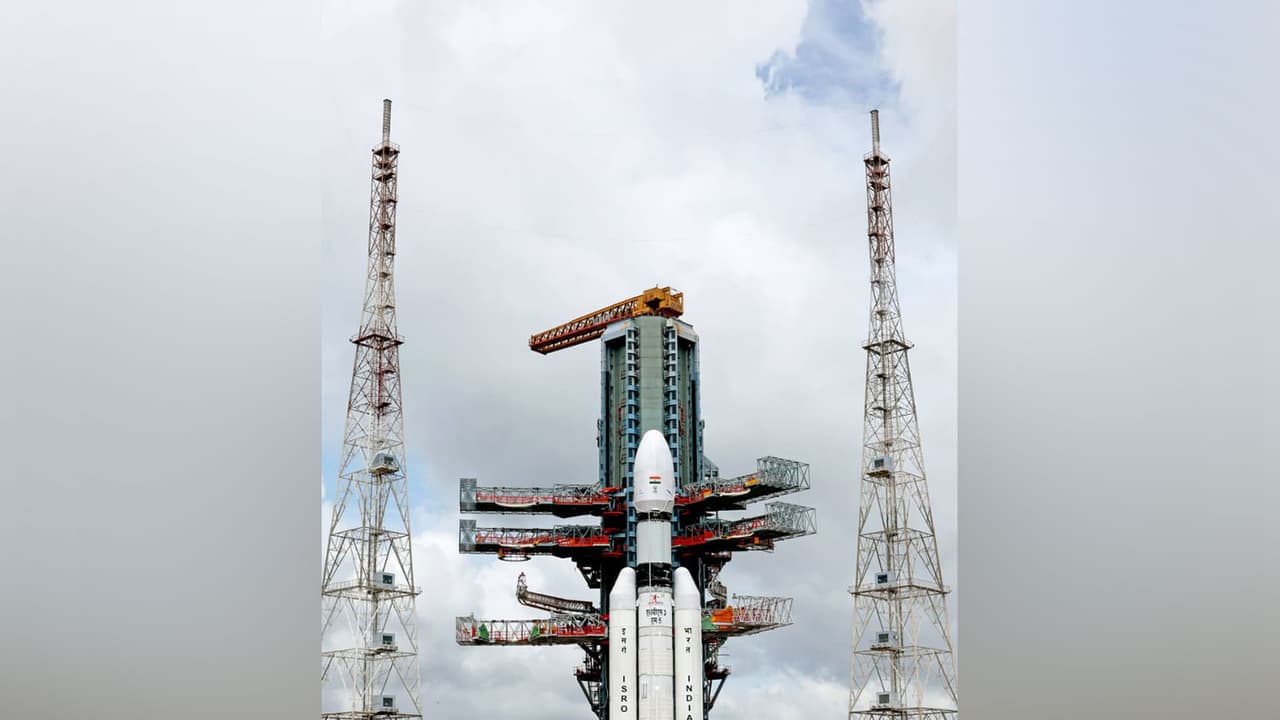ISRO will launch heaviest communication satellite, CMS-03, using LVM3 rocket on November 2. The 4,400 kg multi-band satellite will provide communication services across India and nearby ocean regions. This marks LVM3 vehicle’s 5th operational flight.
The Indian Space Research Organisation (ISRO) is preparing to launch the CMS-03 communication satellite on November 2, 2025, marking a major step in India’s space communication capabilities. The mission will use the LVM3 launch vehicle, also known for sending Chandrayaan-3 to the Moon. According to ISRO, this will be the fifth operational flight (LVM3-M5) of the LVM3 rocket. Once launched, CMS-03 will become the fifth operational satellite in the CMS series.
India’s heaviest communication satellite
The CMS-03 satellite weighs about 4,400 kilograms, making it the heaviest communication satellite to be launched into Geosynchronous Transfer Orbit (GTO) from Indian soil. It is a multi-band communication satellite designed to provide strong and stable communication services across the Indian landmass and surrounding oceanic regions. ISRO confirmed that the launch vehicle has been fully assembled and integrated with the spacecraft. The rocket was moved to the launch pad on October 26, for final checks and pre-launch operations.
Following the success of Chandrayaan-3
The LVM3 rocket previously powered the Chandrayaan-3 mission, which made history when India became the first country to land successfully near the lunar south pole in 2023. That mission showcased India’s progress in space exploration and strengthened ISRO’s global standing.
Focus on future space missions
ISRO’s journey does not stop here. Earlier this year, in September 2025, ISRO Chairman V. Narayanan revealed that work is underway on Chandrayaan-4 and Chandrayaan-5, along with plans for India’s own space station by 2035. The upcoming Chandrayaan-4 will serve as India’s first Venus Orbiter Mission, aimed at studying the planet’s atmosphere and surface. ISRO is also preparing for the ambitious Gaganyaan human space mission, which will send three astronauts to an orbit of 400 kilometres for three days before safely landing in Indian sea waters.
Recently, Group Captain Shubhanshu Shukla, who took part in NASA’s Axiom-4 mission, returned to India, boosting morale ahead of Gaganyaan’s crewed launch.
Strengthening India’s space future
With CMS-03, India aims to enhance its communication network and demonstrate the increasing reliability of its heavy-lift launcher, LVM3. Each successful mission strengthens India’s position in global space research and brings the country closer to achieving self-reliance in space technology.
(With ANI inputs)
